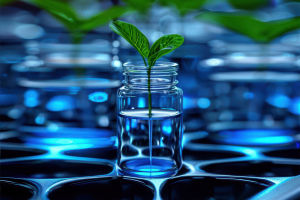Greenhouses are enclosed structures designed to create an optimal environment for growing plants, regardless of the external environmental conditions.
They allow farmers to control critical factors such as temperature, humidity, light, and ventilation, providing a stable and conducive environment for plant growth.
As climate change and fluctuating weather patterns affect traditional farming practices, the use of greenhouses is becoming increasingly important in modern agriculture.
How Greenhouses Work
The Greenhouse Effect
The concept of the greenhouse effect plays a central role in the functioning of these structures. The greenhouse effect refers to the process by which heat is trapped inside the greenhouse due to the transparent materials used in its construction, such as glass or plastic. Sunlight enters the greenhouse and is absorbed by plants and soil. These surfaces then radiate the heat back into the air, but the walls and roof of the greenhouse trap the heat, preventing it from escaping.
Temperature Control
One of the primary advantages of greenhouses is the ability to regulate temperature. Maintaining a consistent temperature is essential for the healthy growth of plants. Greenhouses utilize various heating and cooling systems to maintain an optimal climate. Heating systems, such as electric, gas, or propane heaters, are used to increase the temperature during colder months.
Humidity Control
Humidity is another crucial factor in greenhouse management. High humidity levels can lead to the growth of mold and mildew, while low humidity can cause dehydration and wilting. To maintain the right humidity levels, greenhouses use ventilation systems to promote air circulation and remove excess moisture. Additionally, proper ventilation helps prevent the accumulation of harmful gases, such as carbon dioxide, which can negatively impact plant growth.
Light Control
Light is a vital factor in plant growth, and greenhouses allow farmers to control the amount of light that plants receive. Natural sunlight can be supplemented with artificial lighting, especially during winter when daylight hours are shorter. The intensity of light entering the greenhouse can be adjusted using shade cloths or by applying a shading compound to the exterior of the structure. This flexibility ensures that plants receive the right amount of light to thrive, supporting their photosynthesis and growth processes.
The Benefits of Greenhouses in Agriculture
Greenhouses provide a host of benefits for modern agriculture, offering solutions to the challenges posed by fluctuating weather conditions, pests, and limited growing seasons. Some of the key benefits include:
Extended Growing Seasons
Greenhouses enable farmers to extend their growing seasons, allowing crops to be grown year-round or in climates where certain crops would otherwise not thrive. This is particularly valuable in areas with harsh winters or unpredictable weather patterns.
Increased Crop Yields
By providing a controlled environment, greenhouses can significantly increase crop yields. The ability to control temperature, humidity, and light allows farmers to optimize growing conditions for each plant species, resulting in healthier plants and higher production.
Protection from Environmental Factors
Greenhouses offer protection from pests, diseases, and extreme weather conditions, such as heavy rainfall or frost. By keeping plants enclosed and shielded, farmers can reduce the risk of crop damage and maintain the health of their plants. This is particularly beneficial in regions where pests or unpredictable weather can devastate crops.
Growing Non-Native Crops
Greenhouses also make it possible for farmers to grow crops that are not native to their region, expanding the variety of produce available. By controlling the environment, farmers can simulate the ideal conditions for a wide range of plants, including exotic fruits, vegetables, and flowers.
Water Conservation
Greenhouses can help conserve water by recycling water and reducing runoff. The controlled environment allows for more efficient use of water, reducing the need for irrigation. This is especially important in areas where water scarcity is a concern, as greenhouses can significantly reduce the amount of water needed for crop production.
The Future of Greenhouse Technology in Agriculture
The future of greenhouse technology is shaped by innovations aimed at improving energy efficiency, reducing costs, and increasing production. Advanced materials, such as high-tech plastics and films, are being developed to enhance the energy efficiency of greenhouses while reducing the need for heating and cooling systems. These new materials help maintain a more stable internal climate while lowering operational costs.
Additionally, the rise of vertical farming is revolutionizing greenhouse agriculture. Vertical farming involves stacking crops on top of each other in multi-layered systems, maximizing space and resources. This approach is particularly effective in urban areas where space is limited.
Moreover, automated systems are becoming increasingly common in modern greenhouses. These systems can monitor and adjust temperature, humidity, light, and irrigation levels, reducing the need for manual intervention and allowing farmers to focus on other aspects of crop management.
Dear Lykkers! Greenhouses are transforming modern agriculture by providing an environment that allows plants to thrive year-round. They offer a wide range of benefits, including extended growing seasons, increased crop yields, protection from environmental factors, and the ability to grow crops that are not native to a region.
Greenhouse farming is not just a tool for increasing production but a sustainable solution to the challenges posed by climate change and limited agricultural land!


